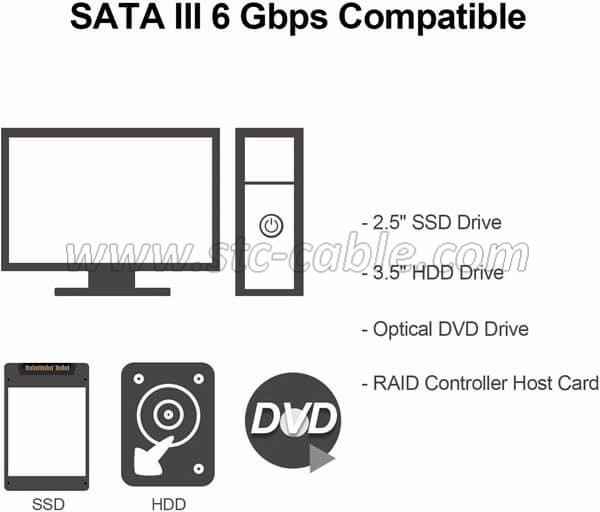How many wires are in a SATA cable?
A standard SATA cable typically has seven wires. These wires serve different purposes:
1. Data Transmission:
Four wires are used for data transmission (two pairs for read and write signals).
2. Ground and Shielding:
Two wires are for grounding and shielding, ensuring signal integrity and noise reduction.
3. Power:
The remaining one wire is for power delivery (SATA power cable) with a 15-pin connector.
Remember, these cables play a crucial role in connecting storage devices to your computer!
What is the maximum length of a SATA cable?
The maximum length for a SATA cable typically ranges up to 1 meter (approximately 39.37 inches) according to the Serial ATA specification. However, it’s essential to consider additional factors:
1. PCB Traces: The actual bus length may be shorter due to PCB traces from the cable connection to the host and drive controllers. These traces add length to the signal path.
2. Quality and Interference: Using cables that are too short or too long can cause timing issues or noise interference. Optimal cable length is crucial for reliable data transfer.
In practical terms, most SATA cables you encounter will be well within this range. If you experience performance or data corruption problems, consider using a different cable or adjusting the length!
3. Signal Integrity:
Keep in mind that longer cables can impact signal integrity.
Use high-quality cables to minimize any potential issues.
Remember to test the extended setup thoroughly to ensure reliable performance!
What SATA cables are needed?
To connect a hard disk to your computer, you’ll need two types of SATA cables:
1. SATA Data Cable: This cable transfers data between the hard disk and the motherboard. It has a 7-pin connector and is essential for data communication.
2. SATA Power Cable: Responsible for supplying power to the hard disk, this cable features a 15-pin connector. It typically comes with the power supply or the hard disk itself.
Send your message to us:
Post time: Jul-08-2024
